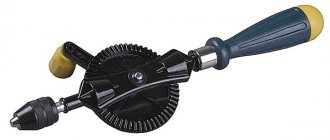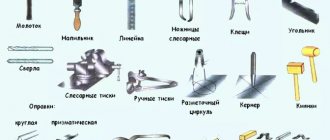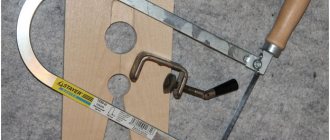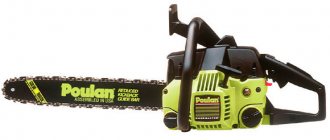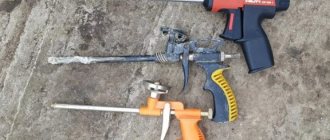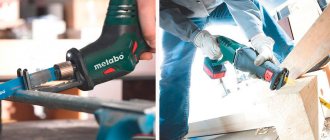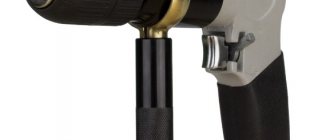A hammer is a striking tool used to drive nails by converting kinetic energy into mechanical energy. The history of the appearance of the instrument goes back several thousand years, but its relevance is not lost even today. No repair or large-scale construction can be completed without this device. Electric or pneumatic analogues cannot replace a simple version of the hammer device. There are several types of tools, each of which can perform other functions in addition to driving. Each type must meet certain GOST requirements.
Characteristics and purpose of the tool
To understand the characteristics of a tool, you must first determine what the hammer is intended for. This device is used if you need to drive a nail or a metal wedge. But the striker device can be more functional, for example, equipped with a device for pulling out nails. This hammer for removing nails is called a nail puller. There are other species that also have their own names.
As for the simplest option, the standard hammer complies with GOST 2310-77. The weight of the hammer depends on the functional features and scope of application, but usually it does not exceed 4 kg. To become more familiar with the tool, it is worth knowing its characteristics. But first you need to know the structure of the device.
GOST 2310-77 Steel hammers. Specifications
1 file 483.81 KB
Looking at the tool, it immediately becomes clear what the hammer consists of:
- Head. The metal part, which in turn is divided into a firing pin, a wedge and a sharp toe, can also have different shapes. Typically the hammer head has a round head and a spherical toe.
- Lever. The length of the handle consists of a part on which the manufacturer’s logo is applied and the main part for holding. The length of the hammer handle can be different, the main thing is that it provides a normal grip.
The dimensions of the hammer are determined in accordance with the structure and type. The main relationship is the mass of the head and the length of the tool handle. The average length can be from 25 cm to 33 cm. Otherwise, if the metal part is heavy and the handle is short, the device will quickly break or be ineffective.
Characteristics of the hammer according to its components:
- The weight of a hammer for driving nails can be 300-800 g. It can be more than 1 kg if the entire structure is made of metal.
- The tool head is always made of steel. Hammer steel goes through several stages of processing - casting, hardening, forging. The protective layer of solid material is 3-4 mm.
- To prevent the metal from being “eaten up” by corrosion, it is covered with a protective layer. Thanks to this, the striking part of the hammer can withstand enormous pressure and powerful blows.
A low-quality firing pin can be immediately identified by its coating. If the head is painted, then the metal is not made according to GOST requirements, and, therefore, is of poor quality.
The handle of any type of hammer can be made of wood, metal or fiberglass. All presented options have their advantages and disadvantages, but wood remains the most popular. In order for the handle to withstand enormous loads, hardwood is used for its manufacture - birch, ash, maple, oak. Additionally, the surface is covered with a protective layer.
Video on the topic
In conclusion, a few words about safety precautions. As you work, hold the hammer firmly by the end of its handle. Monitor the condition of the tool and do not put your hands near the impact site. Wear gloves and use pliers to hold nails in hard-to-reach areas. Naturally, some will dismiss the basic recommendations, but others will remember a couple of broken fingers and cases of a poorly secured working part flying out.
Hammer
- This is a hand tool used in metalworking, carpentry, carpentry and other works.
The hammer
is designed for hammering, breaking, straightening, bending, etc.
From this article you will learn what types and designs of hammers
.
Hammer design:
Any hammer
consists of
a head or body
and
handle
, connected to each other through a hole in the body and a wedge driven into the handle.
The body consists of the part that is struck - the striker
, and
tail or toe
, the toe can have a different shape. The body is usually steel, but can be made of copper, lead, wood, or rubber.
The handle can also be made of various materials, most often wood, plastic, and metal.
Types of hammers.
Types of hammers
, their dimensions and weight are determined by GOST 11042-90.
Let's look at the main types of hammers
:
– has a round or square striker and a wedge-shaped toe. A carpenter's hammer with a square head is intended for working on wood, and with a round one for working with sheet iron. The weight of the plumbing hammer body is 250-800 g.
We advise you to study - Country house: build or buy ready-madeCarpenter's hammer - differs from a metalworker's hammer in the form of a nail puller for removing nails. The weight of the carpenter's hammer body is 600-750g.
- the largest hammer, used for cutting out partitions, recesses, removing old tiles, etc. The body weight of such a hammer is 1-1.5 kg.
Wallpaper hammer - used for hammering small nails, distinguished by its small body and thin handle. The body weight of such a hammer is 100-250 g.
There are also hammers with bodies made of wood, rubber, lead, copper. Such hammers are used for furniture assembly, critical work with pressure-sensitive parts, and when working in explosive and fire hazardous areas.
Types of hammers
Different types of hammers are used in different areas of repair and construction work. Moreover, each model is made of different materials and has a different structure and design. What types of hammers are there:
- A carpenter's hammer is designed to work with wooden parts, so the back of the head is often equipped with a nail puller. The weight is 100-500 g. This lightness is necessary in order to make precise rather than forceful blows. The impact area of the hammer is flat, and the handle can be made of wood, metal or metal-plastic. Rubber pads are usually attached to the base of the handle for a strong grip.
A carpenter's hammer can also be considered a mallet. This instrument is made entirely of hardwood. A mallet designed for working with wooden parts in cases where there is a risk of dents forming in the wood. A mallet is used to connect grooves in wooden parts.
- A plaster hammer is not only designed for working with clay surfaces. This tool is actively used in the process of installing drywall. The device is small in size, and its striking part is round in shape. The back of the head is represented by a small hatchet. This design allows you to drive nails into it without damaging the finishing material or carry out stripping (trimming).
- A rubber hammer is used to lay tiles, tiles or bricks. Accordingly, such a rubber hammer is also called a mallet. The tool helps to compact and level fragile parts of decorative building elements. Since a rubber hammer is called a mallet, this type of tool is ideal for working with wood.
- A carpenter's (roofer) hammer is a tool with a metal head. The striking part can be round or square, and its surface is usually grooved. The head is additionally equipped with a nail puller or a pointed “tendril”. The weight of the tool is usually 300-800 g. The tool is intended for driving nails, wedges and adjusting wooden roof structures and support beams.
- There is a special impact tool for masonry, with which you can knock out bricks while working with bricks and concrete. Thanks to the presence of a flat, narrow part, it is possible to chip off individual parts of stone, brick or concrete. A mason's hammer is called a pick, and is popularly called a “cam”. The tool should be durable and not too heavy.
- The plumber's hammer is considered the most popular and widespread. What exactly does a metalworker's tool consist of? First of all, it is a head that is round or square on one side and hardened on the other at an angle of 45°. The handle is usually made of wood, but can be metal or metal-plastic. Using this tool you can drive wedges and nails.
- The sledgehammer or hammer is considered the largest type of hammer among all. You could say that this is a professional device designed to destroy. Used to deliver powerful blows without much precision. Using a sledgehammer you can drive piles and break concrete. The weight of the device is 8-10 kg. Consists of a rectangular metal head and a wooden handle.
There are also types of devices that are used in narrow areas. A copper hammer is similar to a sledgehammer, but the tip is made of copper. This alloy does not produce sparks upon impact, so it can be used in flammable situations. A small analogue of a plumbing tool is suitable for a welder. But in this analogue, the narrow part has a larger rock angle of about 45°-50°.
Depending on the type of work, the type of percussion instrument is selected. Different head designs help to perform certain manipulations with different finishing and building materials.
Distinctive features of a hammer and sledgehammer
If we consider 2 options for percussion instruments that differ only in mass, then the question arises of how exactly a hammer differs from a sledgehammer. Sledgehammer is one of the subspecies, but all the differences are striking.
The main differences between a hammer and a sledgehammer:
| Characteristics | Hammer | Sledgehammer |
| Weight | 50 - 1000 g | 8-10 kg |
| Size | 28 - 38 cm | 40 cm to 80 cm |
| Purpose | For driving or removing nails | For breaking and driving in piles and wedges |
The main difference between these tools is the impact force and mass. In general, it is believed that a device for hammering, which has a mass of more than 4 kg, is already a sledgehammer.
Recommendations for selection
When the need for a purchase arises, the master, as a rule, understands what type and amount of work will need to be performed using the tool. Therefore, you need to determine which hammer you should purchase based on these parameters.
- Determine the type. To do this, we evaluate the frequency of performing specific tasks. For example, will you need to re-roof or lay tiles in the near future? Perhaps the listed process is a professional activity. In this case, it is necessary to purchase a tile or roofing hammer. However, most often it is enough to purchase plumbing tools.
- We calculate the weight. When choosing a hammer, it is important to take this parameter into account. For large-sized products, you will need to use fairly large nails, which, in turn, will require greater impact force and striker area. To save the physical cost of hammering, you should choose a heavier hammer with a long handle. For example, a hammer is ideal as a tool for this type of work.
- Choose the shape and size. Even certain subtypes of hammers have different functional devices that need to be considered from the point of view of necessity. For example, a tool with a nail puller nose will cost more than one with a regular wedge-shaped head. You should determine the feasibility of overpayment yourself.
- Additional equipment. Modern tools have a number of advantages. For example, more contoured handles allow you to better hold the hammer and spend less effort on this process. And additional rubber pads protect against accidental slipping. As a result, productivity will increase due to more hammer blows being made. Therefore, if there is a choice between a more modern and classic option, you need to choose the more advanced version.
Thus, it becomes clear that in order to choose the right hammer, you need to decide on its functional purpose. The type of work and its volume should be thought out in advance, because its weight, shape and additional equipment will depend on this. Only with the help of such a sequence is it possible to accurately select a tool for solving certain technical problems.
Basic rules for working with a hammer
A tool that requires special care when handling. Although the force of the blow depends on the type of hammer, even a light head hitting the head at low speed can be fatal. To avoid this, you need to know the basic operating rules:
- The work can only be done with working tools. The head should fit tightly on the handle. The wooden handle should not be chipped; its length must correspond to the weight of the metal part.
- The firing pin must be intact without chips or cracks.
- The grip should be carried out at a distance of 3-4 cm from the end of the handle.
- Only a straight nail can be used in this work. A small hole is first made for the nail. You can use an awl for this.
- Hammering is done so that the hand performs only vertical movements.
- Transfer the device from hand to hand only in the lowered position. In the same state, the grip is changed.
If there is a violation in any part, then working with such a tool is strictly prohibited.
If at least 1 point is violated, then the master is in danger. The worker may suffer serious or fatal injuries to the head, hand, or fingers.
Hammer for plumbing work
The instrument got its name from a specific profession. Its practicality gives it the right to be considered the most common type. The shape of the hammer head is a flat head on one side and a pointed head on the other. The wedge-shaped side is called the spout. The weight of the tool, including a wooden or plastic handle, can range from 200 grams to 1 kilogram.
To choose the right tool, you can look through the catalog of metalworking hammers. Lightweight, small tools make it easier to hammer in small nails. To do this, use the narrow part of the striker. When installing glazing beads or securing lining, this side of the hammer is best suited for the job.
For heavy types of hammers, a different range of construction processes is provided. They are used when driving large-sized nails, bending metal sheets and other more labor-intensive work. Over time, the metal head may fly off the butt (handle).
In such cases, it is a good idea to know how to make the hammer work again. Craftsmen do not always throw away rejected tools. If possible, they try to return him to work.
How to choose a hammer
It seems that choosing a hammer is not such a problem. In fact, there are a lot of nuances that you should pay attention to during the purchasing process. When choosing a tool for a certain type of work, you need to evaluate the following factors:
- Depending on the functional features, each option has a different type of impact part. Therefore, you need to decide exactly what type of work you need the tool for.
- You need to carefully inspect the handle for chips and more complex damage. A high-quality tool will have a perfectly smooth and dense handle, regardless of what material it is made of.
- Much depends on the design. For example, a steel hammer is made entirely of steel. Therefore, the handle must have appropriate extensions at the head and at the end of the handle. A special coating is provided that will provide a good grip. If the design does not meet such conditions, then the tool will give a huge recoil or vibrate upon impact.
- A heavy tool should have the thickest and longest handle possible. Normally, the length is 38-45 cm. When the length of the handle is shorter, there is a risk of serious injury due to a fracture of the base of the handle during operation.
- The next factor will be the weight of the tool. For everyday use, it is enough to have a hammer weighing 350-450 g. If you need to carry out more serious construction or repair work (dismantling walls, roof repairs), then the weight of the device should be 0.6 - 0.8 kg.
- The requirements for the head in terms of fastening are the most important. The metal part should fit tightly on the handle, not move, deform, or dangle. This aspect can be checked directly during the purchase process by making a few steps.
Choosing is not so difficult if you know and take into account all the nuances during the purchase. You need to pay attention to the structure and fastenings of the tool, its capabilities and functionality.
Hammer with nail puller
This hammer can be called a roofing or carpenter's hammer.
Its uniqueness is that it has a round convex striker shape, and on the other side there is a nail puller. Such features of this hammer create convenience when working with nails, which is in demand in roofing and carpentry work.
Very convenient and practical when installing sheathing and bitumen shingles.
In size they are medium weights 500-600 grams.
Suitable for driving nails up to 150 mm in size.
It is worth noting that low-quality hammers of this type are very common on sale. They are cheap in price. They are light in weight and have a poor connection to the head. As a result, they break literally after the second blow or during the first attempt to pull out the nail.
But you shouldn’t overuse the nail puller even with high-quality hammers. They can also break under heavy loads. This applies to pulling out nails larger than 150 mm for ordinary construction (glossy) nails and 100 mm for rough or screw nails.
How to make a hammer with your own hands
You can make a tool for personal use yourself. The manufacturing process is quite labor-intensive, since you need to properly prepare the metal component, the handle and perform high-quality assembly.
The most popular type of hammer is the metalworker's hammer, which is actively used in everyday life and has versatility. Making this option is much more difficult than, for example, a wooden mallet.
How to make a hammer with your own hands at home:
- First of all, you need to choose the “right” steel. And then proceed to the formation of drawings and manufacturing itself. The ideal material for making the head would be high-carbon tool steel. It’s better to immediately find a block of the required parameters. And then process the workpiece correctly.
- Next you need to prepare a drawing of the hammer with dimensions. Such a sketch will help you follow the plan exactly and make the head as correct as possible.
- Use a lathe to turn a piece of steel in accordance with the parameters specified in the drawing. This will help make the metal part of the hammer as smooth as possible. By adhering to the exact parameters from the drawing, you will be able to obtain an accurate and effective version of the vertex.
- In the finished base of the head you need to drill a hole in which the handle will be fixed. In order not to make the hole too large, it is worth at least thinking through the cross-section of the handle in advance.
- The next step will be making the handle. For this purpose, a drawing for the hammer handle is initially made. You can choose the most suitable and convenient handle option.
- A handle is made from hardwood on a carpentry machine. In some cases, you can make a metal handle, but you will have to use all the skill and skill to make a suitable figure. After making the basic shape, you need to sand the surface to remove the slightest chips and protruding wood fibers.
- Then you need to place the head on the finished handle. The handle should fit tightly into the hole in the metal part. An additional fastening will be a wedge that is driven into the middle of the cross section of the wooden handle. The blade is driven through the upper hole in the hammer head.
- Next, you need to apply a protective coating to the metal component of the tool and treat the wood itself. After this, the tool will be completely ready for use.
A hand-made hammer must at least approximately meet the requirements of GOST. Even if there are differences, the tool will definitely be suitable for household use. The main thing is that it is strong and reliable.
Hammers can have different shapes, weights, structures and sizes, but the main function of the tool remains to enhance a person’s impact on another object. Most often, the tool is used for driving or driving nails, piles, connecting grooves and leveling tiles. The principle of structure and other characteristics depend on the type of device. You also need to handle the device skillfully, as it is a very serious tool that can cause significant injuries.
Wooden hammer: what is it used for?
Photo 4 — Wooden mallet Stanley 1-57-046
Mallet - a hammer made of hard wood. The carpenter's main tool is most often used with chisels and chisels, the handles of which have a crimp ring, since blows with a wooden hammer directly on the handle of the cutting tool are softer than blows with a metal hammer, which protects the handles from damage.
Available with wooden or metal handle.
Divided into:
- carpentry;
- metalwork;
- turning
Used for roofing work, furniture assembly, plumbing and installation work.
| 200 gr | mainly for laying paving slabs, as well as when working with a chisel or chisel |
| 500 gr | the mallet is rubber, has a rubber impact head, therefore it is used to correct various defects on materials that are especially sensitive to impact |
| TOPEX 500 g 02A050 | weight, kg: 0.49 dimensions, mm: 45 x 125 x 315 a wooden hammer is indispensable for knocking out other tools, such as chisels or chisels, a rectangular head made of hardwood guarantees the durability and strength of the tool, a comfortable handle, the wood is protected from absorbing moisture, so the tool always remains lightweight |
Kirochka
The pick hammer is used in furnace, stone and tile work. For a mason it is simply an irreplaceable thing. They differ in weight and shape, but not significantly.
Photo 5 — Hammer-pick MATRIX 21826 500 g
The butt plate of the pick is pointed and flat, slightly curved downwards, similar to a pick, which is what gave it its name.
Using a pick, they carefully break stones, break bricks and tiles into different parts of the desired shape and size, correct masonry defects, and prepare the wall surface for cladding.
Regulated by MKI 1 GOST 11042 90.
claw hammer
The main purpose is metalwork, carpentry work, dismantling. A secure, non-slip grip is provided by soft pads with holes on the handles. When impacted, it effectively dampens vibration.
The titanium nail puller is the leader in strength and reliability.
Photo 6 – Titanium Stiletto MILWAUKEE TBM 14 TBM-RMC + SR
Tool standards are specified by GOST 11042 90.
The service life of the nail puller is long, since forging was used in manufacturing.
The hammer can be:
- with straight nail puller for carpentry work;
- all-metal, which can withstand heavy loads;
- with a magnet (there is a recess for a nail with a small magnet).
The best Truper models
| Model | Description |
| 0.48 kg; used both in home life and in carpentry workshops. |
| 0.57 kg; in carpentry workshops; |
| 0.5 kg; for carpentry work; practical and ergonomic handle made of American walnut. |
The best Matrix models
| Model | Description |
| 0.45 kg. For installation work. Fiberglass handle. |
The best model Enkor
| Model | Description |
| weight – 0.45 kg. For installation work. Fiberglass handle. A magnet built into the striker secures the nail. |
Tinsmith's Hammer
This type of hammer is intended for assembly or installation work , roofing work, straightening surfaces made of thick sheet metal or laying paving slabs. The impact part of such a hammer is made in the form of a barrel-shaped or cylindrical shape with convex ends. It is usually made of special rubber that does not leave marks on the surface. With this hammer you can bend or, conversely, level or shape materials without damaging their integrity. Therefore, motorists use it very often. The weight of this instrument ranges from 300 to 700 g. The handle is usually made of tough wood species such as ash or birch.
5. Mallet
This type of hammer can also include straightening hammers . They are intended for leveling iron products that have been subject to deformation, drainage systems, roofing work and other work that involves the use of sheet metal .
This tool has one very interesting feature . The impact part of the straightening hammer is made with an internal cavity, which is filled with sand or small shot. This structure made it possible to completely dampen the inertia of the hammer during impact. During operation, it does not bounce off the surface and practically “sticks” to it. Such hammers are called inertia-free hammers . They are made of rubber or polyurethane, and some models are made of metal with replaceable heads made of a softer material.
Mallets are intended for plumbing and carpentry work, namely for straightening, leveling or fitting large elements made of soft metals or wood. The striking part of the instrument is made of rubber or hardwood , such as birch or elm. Rubber can be either black or white. White mallets are preferable, since impacts from black rubber may leave dark stripes on light-colored surfaces.
as the handle material ; usually the handle has the shape of a circle in cross section. Depending on the purpose, mallets can have different shapes of the striking part. Tools for carpentry are cylindrical or barrel-shaped, while carpenter's mallets have a wedge-shaped side on one side. The advantage of these types of hammers is that they do not leave dents or marks on the surface being processed.
When choosing a mallet, you need to focus on the type of work being performed. If these are more precise actions, then a light weight tool from 220 to 450 g is enough for you; if you need greater impact force, then pay attention to a tool weighing from 900 to 1000 g. The pricing policy for this type of hammer is very different, but you don’t have to choose the most expensive mallet. You will hardly be able to find any differences from the average pricing tool, which means that you will overpay for the “name”.
Hammer design
Hammers began to be used long before the advent of intelligent man, but since then the design has remained almost the same. Today's instruments differ only in size, materials and abundance of choice.
Before you begin analyzing the characteristics of the hammer, you should learn about its design.
The hammer consists of two main parts: the head and the handle. The head consists of metal alloys and performs the main function when performing any work. It can be of different shapes and sizes, and this is what distinguishes hammers. The second part is the handle.
An equally important element in the structure of the instrument. It can be made from different materials and have different lengths. Some models have a special coating on the handle. The hammer parameters and the manufacturer’s brand logo are also applied to it.
